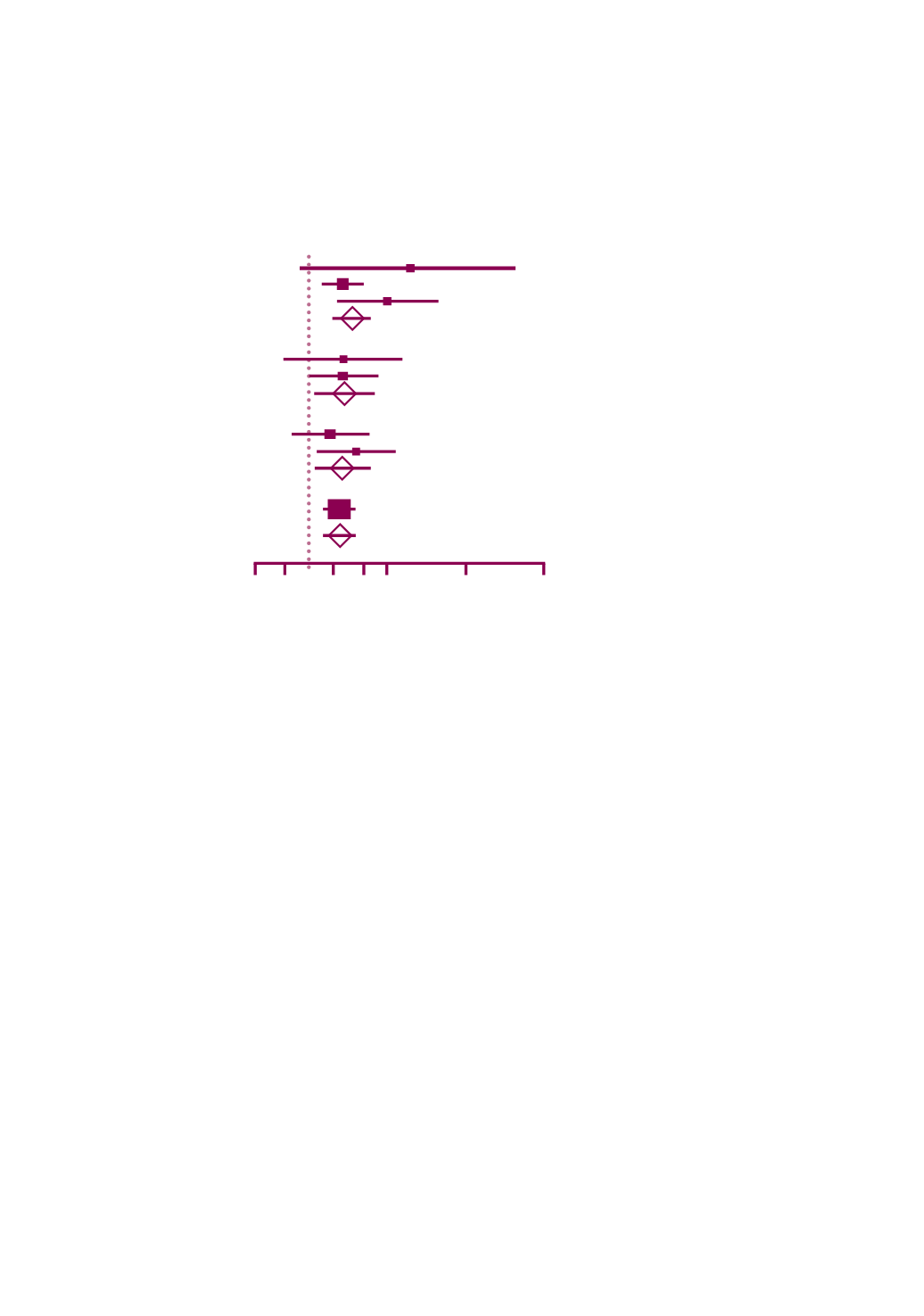
110
Informaciones
Psiquiátricas
2016 - n.º 226
Figura 5. Odds ratios de no remisión en grupos de DUP largo vs DUP corto.
Source
Black et al,
40
1998
Bottlender et al,
29
2002
Verdoux et al,
37
1999
6-mo Follow-up Combined (n=266)
Odds Ratio (95% CI)
19.00 (0.87-413.26)
2.74 (1.48-5.07)
10.00 (2.38-42.01)
3.55 (2.03-6.18)
Definition of Remission
No Positive Symptoms on PANSS >3
GAF Scale Score >62
Variant of the WHO Life Chart Method
Tirupati et al,
50
2004
Malla et al,
41
2002
12-mo Follow-up Combined (n=133)
2.73 (0.48-15.59)
2.76 (0.99-7.67)
2.75 (1.14-6.64)
Variant of the WHO Life Chart Method
All Global SAPS Items <2
1.87 (0.59-5.91)
4.00 (1.25-12.84)
2.72 (1.20-6.17)
Variant of the WHO Life Chart Method
Variant of the WHO Life Chart Method
2.42 (1.51-3.86)
No Symptoms at Interview
2.42 (1.51-3.86)
Craig et al,
46
2000
Verdoux et al,
37
1999
24-mo Follow-up Combined (n=206)
Huber et al,
33
1975
269-mo Follow-up Combined (n=491)
Log Odds Ratio
0,2 0,5 2 5 10
100
1000
1
Figure 2.
Odds of no remission in the long vs short duration of untreated psychosis (DUP) groups. An odds ratio
greater than 1 indicates that individuals in the long DUP group were more likely not to be in remission at the follow-
up point. CI indicates confidence interval; PANSS, Positive and Negative Syndrome Scale; GAF, Global Assessment of
Functioning; WHO, World Health Organization; and SAPS, Scale for the Assessment of Positive Symptoms. Squares
indicate the size of the contribution to the study of the summary odds ratio (diamonds).
En la actual investigación clínica de la
esquizofrenia, la DUP ha devenido un con-
cepto de uso cotidiano. Vayamos ahora al
esquema evolutivo del primer episodio de
esquizofrenia (figura 6), que puede divi-
dirse en cinco etapas sucesivas: fase pre-
mórbida, síntomas prodrómicos, síntomas
psicóticos, primer tratamiento y síntomas
residuales. Pues bien, la DUP corresponde
a la fase de síntomas psicóticos, que ocupa
el lugar central del esquema y que empieza
por el inicio del episodio; el final de este
primer episodio corresponde al resultado fi-
nal del primer tratamiento; ambos, inicio
y final del primer episodio determinan la
duración del episodio psicótico. El inicio de
la enfermedad corresponde al inicio de la
fase de síntomas psicóticos y también ter-
mina con el final del primer tratamiento;
ambos, inicio de enfermedad y final del pri-
mer episodio, determinan la duración de la
enfermedad.
Javier Labad


